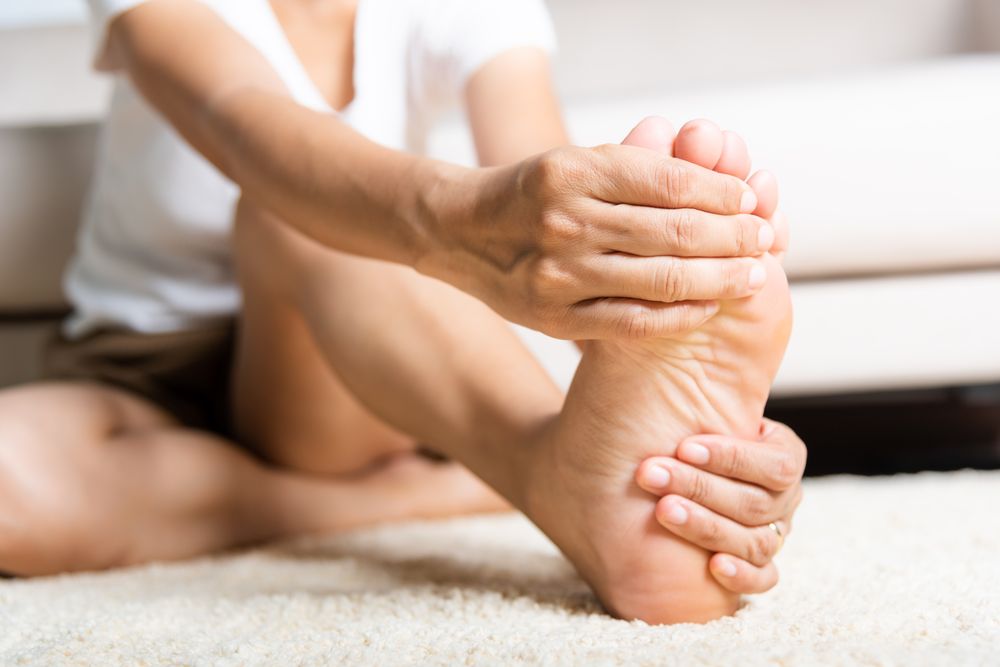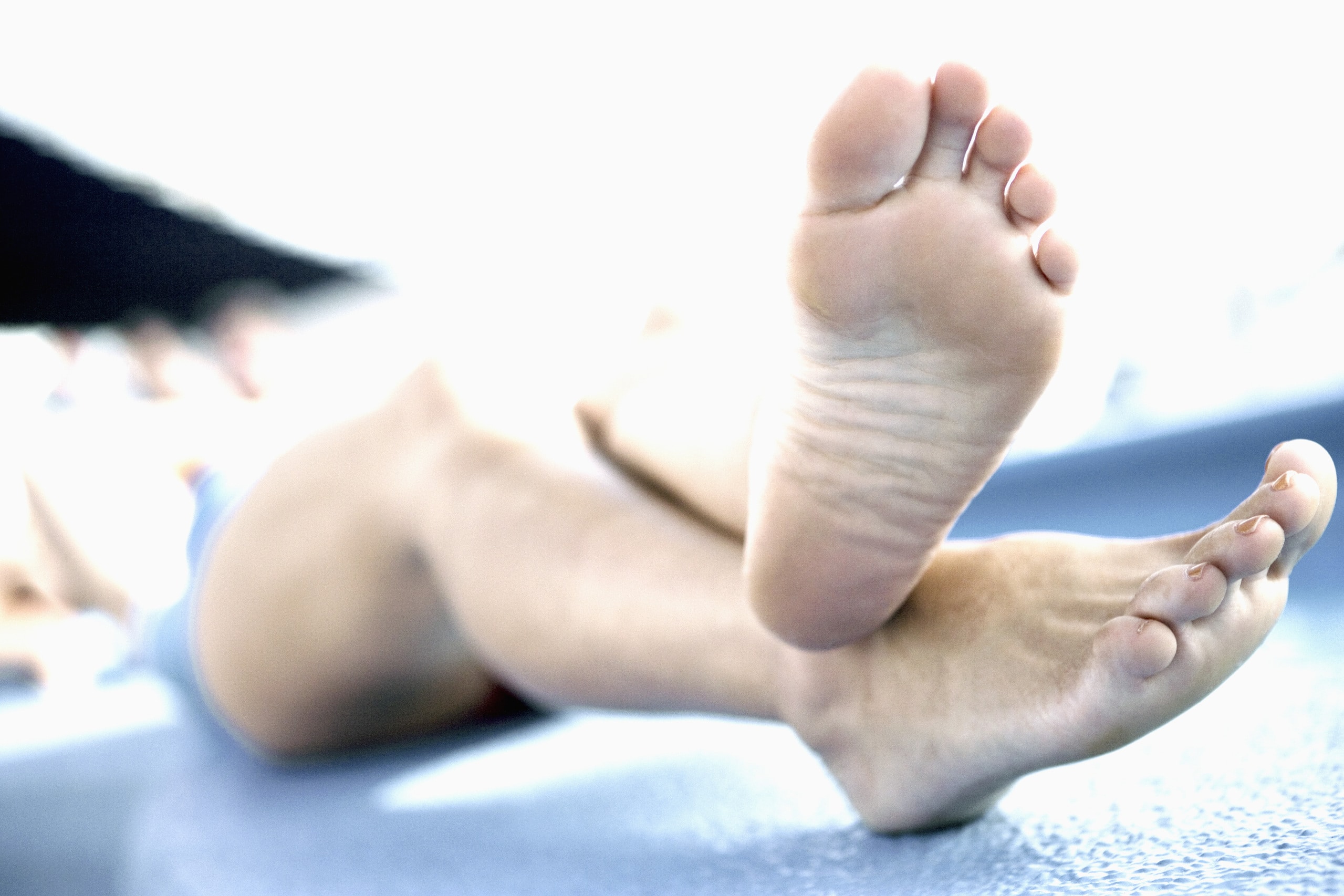Diagnosis and Treatment of Bunions in Wake County

What is a Bunion?
Hallux valgus, more commonly referred to as a bunion, is a painful, bony bump that develops slowly on the inside of the foot at the big toe joint. Pressure on the big toe joint makes the big toe lean toward the second toe. Over time, the normal structure of the foot changes, resulting in a bunion, which can make wearing shoes and walking painful or difficult.
The big toe is made up of two joints; the larger of the two is the metatarsophalangeal (MTP) joint, which is where the first long bone of the foot meets the first bone of the toe. A bunion forms when the bones that make up the MTP joint move out of alignment. The MTP joint gets larger and protrudes from the inside of the forefoot. The enlarged joint is often inflamed. The word “bunion” comes from the Greek word for turnip, as the bump on the inside of the foot typically looks red and swollen like a turnip.

What Causes Bunions?
Bunions may be caused by wearing poorly fitted shoes, such as heels with a pointed toe that forces the toes into an unnatural position, heredity (the shape or structure of the foot makes it more likely to develop bunions), or having an inflammatory condition, such as rheumatoid arthritis. Anyone can get a bunion, but they are more common in women. Many women wear tight, narrow shoes that squeeze the toes together, which makes it more likely for a bunion to develop, worsen, and cause painful symptoms.
A bunion that forms in the main joint of the little toe is called a bunionette, or “tailor’s bunion.” Although it is in a different spot on the foot, a bunionette causes the same symptoms as a bunion.
Symptoms of Bunions
Symptoms of a bunion, when severe, can make even the most common of daily activities more difficult. If you are experiencing pain that makes it difficult to walk or go about your day, we encourage you to schedule an appointment with a foot and ankle specialist at Raleigh Orthopaedic, who will be able to determine the cause of your discomfort. Common symptoms of bunions include:
- A visible bump on the inside of the foot
- Pain and tenderness
- Redness and inflammation
- Hardened skin on the bottom of the foot
- A callus or corn on the bump
- Stiffness and restricted motion in the big toe, which can lead to difficulty walking
How are Bunions Diagnosed?
A doctor can diagnose a bunion by examining the foot. The physician may examine the big toe for changes in bone structure and move the toe to see if the bunion restricts range of motion. After a physical examination, a doctor may order an X-ray, which can also be used to diagnose bunions. The X-ray can determine the severity of the bunion and, using the images, your doctor should be able to come up with a proper treatment plan. Ultrasounds and MRIs can also be used to diagnose bunions and rule out more severe injuries. However, these tests are not commonly used.

Treatment Options for Bunions at Raleigh Orthopaedic
In most cases, bunions are treated without surgery, which can help reduce pain and keep the bunion from worsening. Nonsurgical treatment cannot actually “reverse” a bunion. Nonsurgical treatments include:
- Changes in footwear: Bunion pain is relieved by wearing wider shoes that do not compress the toes. Some shoes can be modified by using a stretcher to stretch out the areas that put pressure on the toes.
- Padding: Pads can help cushion the painful area over the bunion and reduce pressure on the big toe.
- Orthotics: Wearing over-the-counter or custom-made shoe inserts (orthotics) can take pressure off a bunion. Toe spacers can be placed between the toes.
- Icing: Applying ice several times a day for 20 minutes at a time can help reduce swelling. Do not apply ice directly onto the skin.
- Medications: Nonsteroidal anti-inflammatory medications such as ibuprofen and naproxen can help relieve pain and reduce swelling.
Bunion surgery is only recommended if other nonsurgical options have not provided relief. Surgery realigns the bone, ligaments, tendons, and nerves so that the big toe can be brought back to its correct position. No hospital stay is required after surgery. There are many different surgical methods to address bunions. The best method of surgery for you will be determined after an examination by one of Raleigh Orthopaedic’s foot and ankle specialists.

What is Recovery from Bunion Surgery Like?
It can take anywhere from six to twelve weeks for your bones to fully heal after bunion surgery. However, swelling may last for six to twelve months. Your healthcare provider will most likely require you to wear a protective boot and you will not be able to put weight on your foot during the healing process. You will need crutches or a walker to move during the recovery period. Physical therapy will begin after you have regained foot function, which usually takes six to twelve weeks.
Can Bunions Be Prevented?
Bunions develop slowly over time, so taking care of your feet while you are young is the best way to prevent them. If bunions run in your family, it is important to monitor the shape of your feet and how they develop over time. Strengthening the muscles in your feet by picking up small objects with your toes can prevent bunions from developing. Wearing comfortable footwear that fits properly and provides support is another way to protect against the future development of bunions.

Learn More About Foot and Ankle Treatment at Raleigh Orthopaedic
Your well-being is important to us. Raleigh Orthopaedic is Wake County’s oldest and most experienced orthopedic practice, serving the Triangle and surrounding regions of central North Carolina since 1919. We offer online scheduling for your convenience – book online today! We also offer urgent care services for those with a recent injury.




